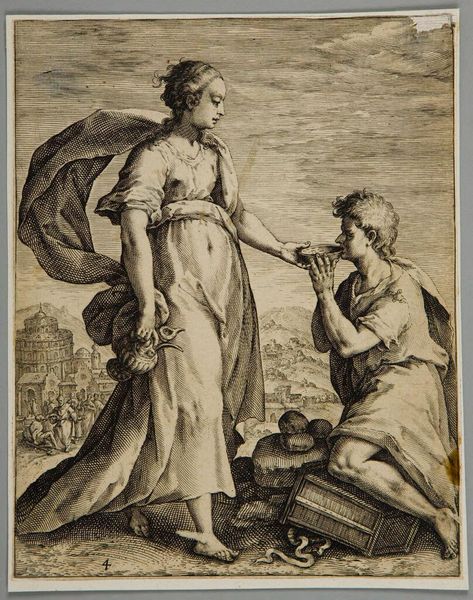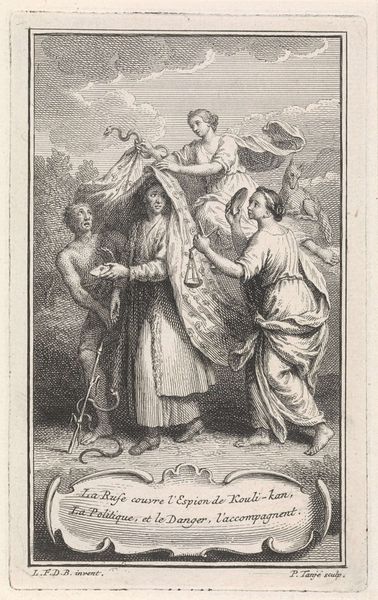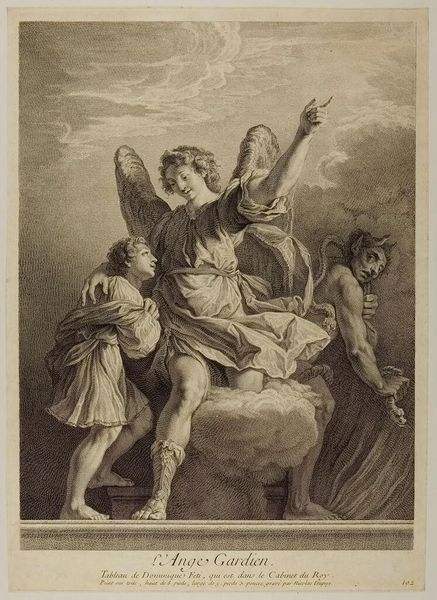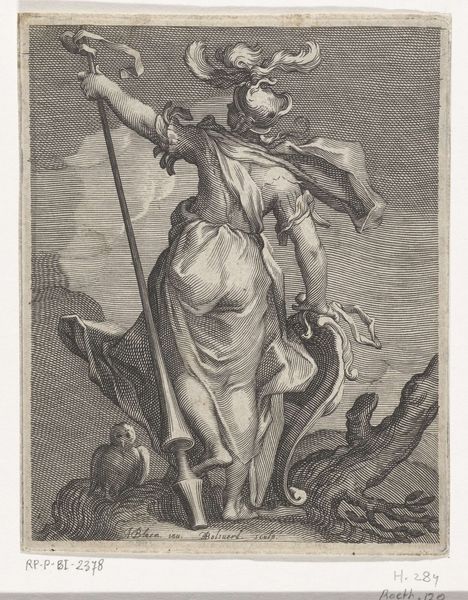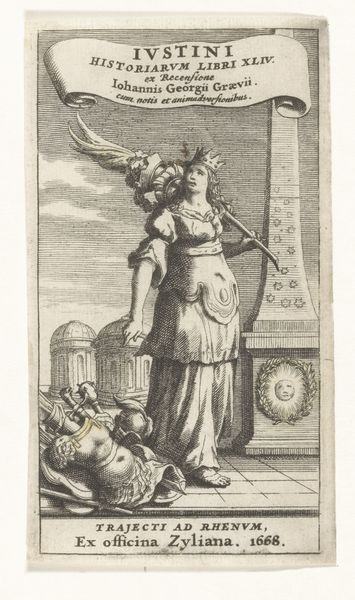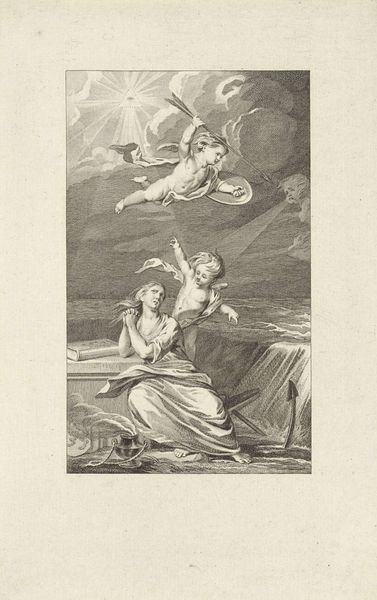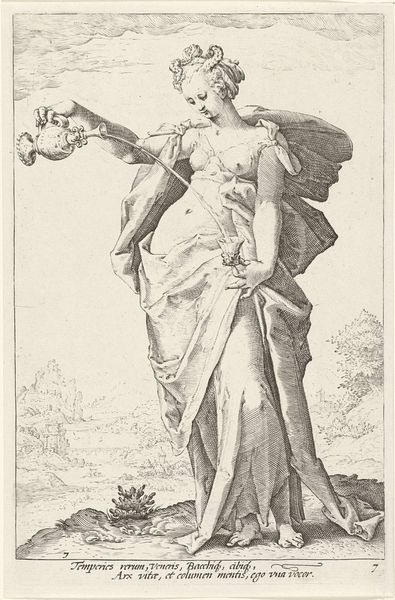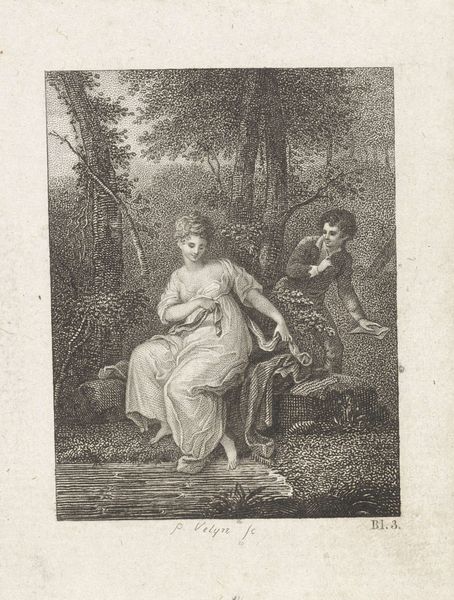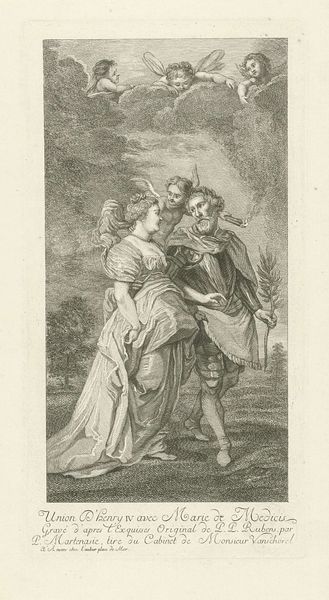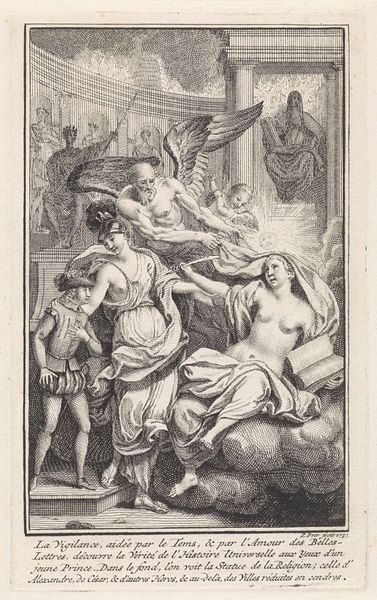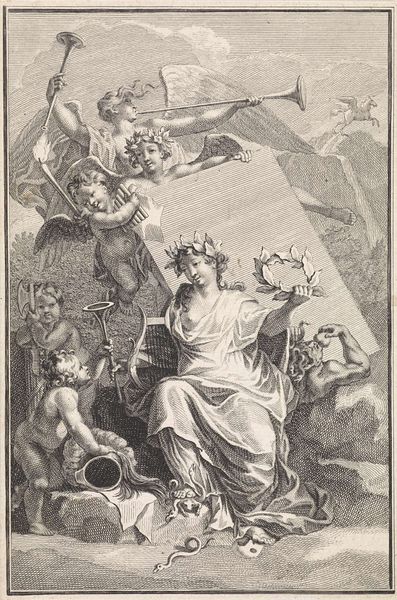
print, engraving
#
neoclacissism
#
allegory
# print
#
landscape
#
classical-realism
#
figuration
#
line
#
history-painting
#
engraving
Dimensions: height 181 mm, width 115 mm
Copyright: Rijks Museum: Open Domain
Editor: This is "Minerva Beschermt de Nederlandse Maagd" from 1815-1816 by Reinier Vinkeles, a print, currently at the Rijksmuseum. It seems to represent some sort of allegory with strong neo-classical undertones, and I'm curious, what do you see when you look at this piece? Curator: Well, consider the physical process of engraving, the labour involved. Vinkeles used a burin to carve lines into a metal plate, layer upon layer, wiping ink across the surface, transferring the design to paper. It’s not just a picture; it’s a record of labour. The materiality is essential. What kind of paper do you think he might have used? Was it readily available? Editor: Probably whatever was the common paper available at the time for printmaking? Was there any sort of paper shortage that might have made the work difficult to create? Curator: Precisely! Think about the socio-economic context. This print wasn't just made in a vacuum. The Napoleonic Wars had just ended. It speaks directly to Dutch identity in the aftermath, depicting the Netherlands as the 'Maagd', a virgin, needing protection. Who are the consumers of these prints? What were they hoping to obtain from purchasing and viewing such artworks? Editor: So, the print isn't just art, but a product of its time, reflecting the political and economic landscape through its materials and means of production? And who it was aimed at would reflect its success? Curator: Exactly. Neoclassicism here isn’t just about aesthetics. It is a conscious reference, linking the newly formed Kingdom to the glory of the ancient republics. Look at the French Eagle as an emblem of threat and consider the role of such mass-produced imagery in fostering national sentiment, turning simple materials into tools of political rhetoric and social identity formation. Editor: I never considered prints this way! So it's less about individual genius and more about a network of resources, labour, and social meaning expressed through a particular artistic technique. Curator: Precisely, now how can we re-evaluate its legacy today in the grand scheme of art production and material appreciation?
Comments
No comments
Be the first to comment and join the conversation on the ultimate creative platform.
